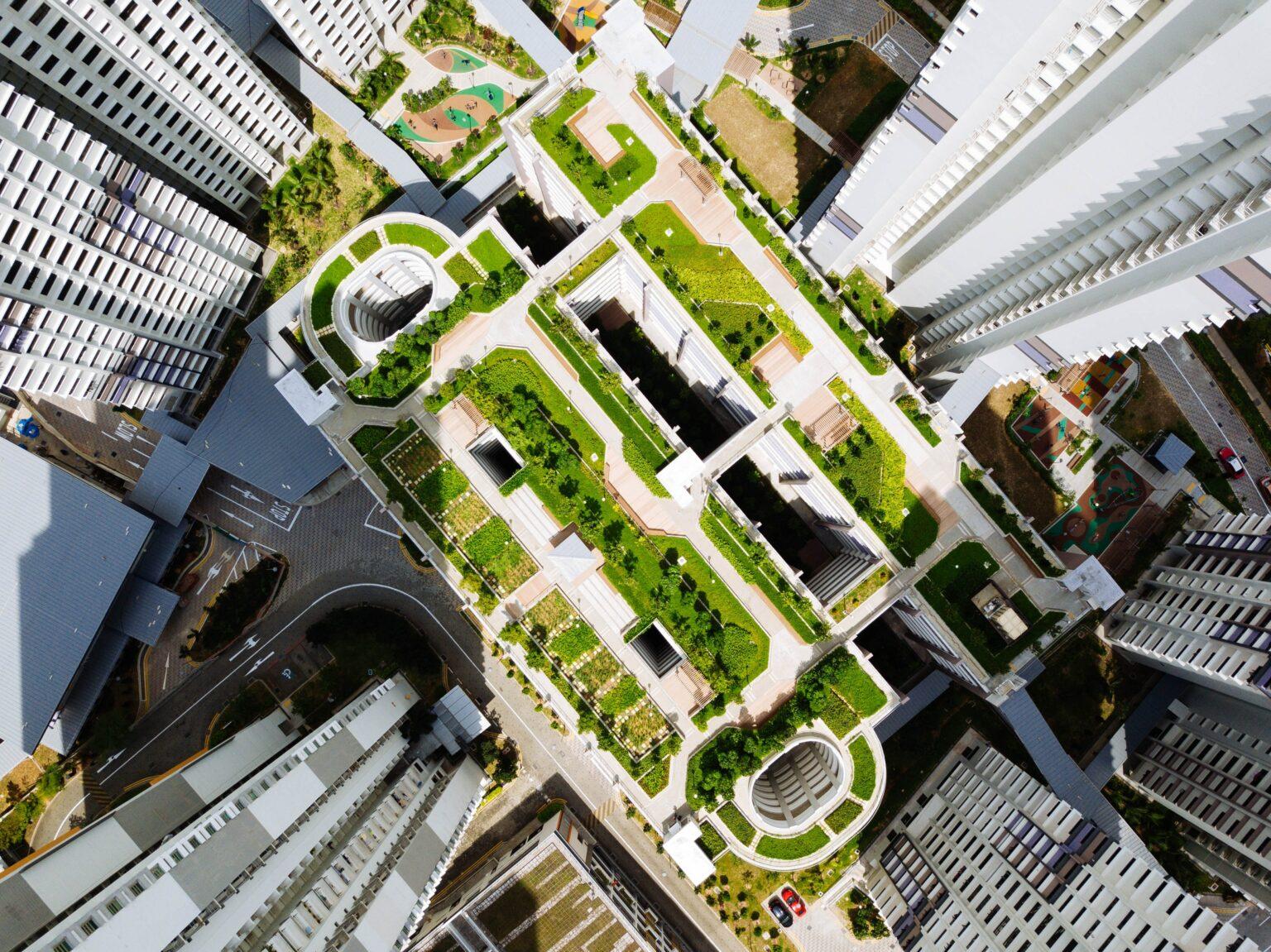Importance of Maximizing ROI in Commercial Construction
in commercial construction, ensuring you get the best value for your money, or the return-on-investment (ROI) is essential. The construction industry is faced with challenges such as budget constraints, rising cost of materials and stringent regulations. So, finding new strategies to increase ROI is vital to ensure the longevity and success of projects.
Effective resource utilization, the reduction of waste, and the use of technology are the most effective strategies to boost ROI. Boulevard Construction in Sacramento is an illustration of how intelligent design and innovative solutions can yield incredible returns on investment. This is a great illustration of the importance of looking outside the box to succeed in the construction business regardless of the difficult conditions.
Sustainable Construction Practices

-
Green Building Materials and Methods
Utilizing green building materials and techniques is an essential aspect of sustainable construction methods. Utilizing eco-friendly materials like recycled wood, reused steel and low-emission concrete can reduce the environmental impact of projects while encouraging resource conservation. Furthermore, using environmentally friendly construction techniques like the passive solar concept, natural ventilation and rainwater harvesting improves the efficiency of energy and decreases environmental impacts.
-
Energy-Efficient Design Solutions
The use of energy-efficient designs plays an essential contribution to reducing the operational cost and maximising ROI over the lifetime that commercial structures. Utilizing energy-efficient heating and cooling systems, lighting with LED and high-performance insulation enhances the building’s performance and decreases the energy use. Through optimizing the design of the building envelope as well as incorporating strategies for daylighting developers can increase the efficiency of energy and comfort for occupants while also reducing utility costs.
-
Renewable Energy Integration
Incorporating sources of renewable power like wind, solar and geothermal energy in commercial construction projects provides an opportunity to maximize return on investment. The installation of solar panels onto roofs or adding wind turbines to designs for buildings lets developers produce renewable, clean energy on site which reduces the need for grid power and lowering costs for utilities. In addition, making use of the incentives offered by renewable energy and finance options could boost the economics of projects and speed up the rate of ROI.
Advanced Technologies

-
Building Information Modeling (BIM)
Building Information Modeling (BIM) transforms the design, planning and construction processes by generating digital representations of infrastructure and buildings. BIM allows collaboration in decision-making, enhances coordination of projects, and increases the efficiency of construction by providing those involved with complete information about the performance of projects and their potential risk. Through the use of BIM technologies, builders are able to improve workflows, minimize errors, and maximize the allocation of resources, ultimately increasing ROI.
-
Drones and Aerial Imaging
Drones, as well as other aerial image technology can be beneficial in enhancing the management of projects, site analysis and tracking progress in industrial construction. With high-resolution cameras as well as LiDAR sensors, drones can capture high-quality aerial photos and produce precise 3-D renderings of the construction site. These data allow the project’s stakeholders to track progress, pinpoint potential issues and make informed choices immediately, resulting in increased efficiency and savings.
-
Virtual Reality (VR) and Augmented Reality (AR) Simulations
Virtual Reality (VR) and Augmented Reality (AR) simulations transform the way in which users perceive the construction process and engage with it. VR technology lets users experience real-life virtual environments, allowing users to look at building plans and simulations of construction processes prior to when the construction begins. AR overlays digital data onto the real world, allowing users to see building components and construction process sequences on-site. Through the use of VR or AR simulations, developers are able to enhance communication about design, increase stakeholder engagement, and pinpoint potential conflicts early on in the lifecycle of a project, thus increasing ROI.
-
Prefabrication and Modular Construction
Modular construction and prefabrication techniques provide huge advantages in terms of efficiency, cost-effectiveness, as well as quality control. Prefabricated building components are produced on-site under controlled factory conditions and later shipped on-site to be assembled. Modular construction consists of the creation of modular building elements which can be assembled on-site to build complete structures. These construction methods offsite can reduce the time needed to construct, eliminate the amount of waste and improve quality control, which results in quicker project completion and a higher return on investment for developers.
In embracing sustainable practices in construction and utilizing advanced technologies developers can increase the return on investment in commercial construction projects while encouraging environmental responsibility and fostering innovation. These innovative methods not only improve financial performance, but they help to improve the long-term sustainability and resilience of the built environment.
Streamlined Project Management

-
Lean Construction Principles
Implementing lean construction methods involves maximising efficiency and reducing waste during every stage of construction. Through optimizing workflows, cutting down on unnecessary tasks, and encouraging collaboration between project stakeholders Lean construction techniques aid in streamlining project management and increase overall efficiency. Strategies like Value stream mapping continual improvement, and just in-time delivery allow construction teams to finish projects more efficiently, and increase ROI.
-
Agile Project Management Methods
Agile project management techniques emphasize flexibility, adaptability and adaptability to changes for commercial construction project. By breaking complex projects into manageable, smaller tasks and iterating through the development cycles, agile methods allow construction teams to react quickly to changing needs and feedback from stakeholder. Implementing agile project management encourages innovative thinking, increases the quality of project outcomes and improves the overall efficiency of project delivery which ultimately maximizes ROI.
-
Integrated Project Delivery (IPD) Systems
Integrated Project Delivery (IPD) systems encourage collaboration, transparency, and a shared risk among the project’s stakeholders. Through the formation of multidisciplinary teams at the beginning of the project’s lifecycle and aligning incentives to the project’s goals, IPD fosters a collaborative approach to problem-solving and decision-making. Integrated project delivery systems use Building Information Modeling (BIM) technology and collaborative contracting strategies to simplify communication, improve the allocation of resources, and increase the efficiency of projects, leading to an increase in ROI for all parties who are involved.
Risk Management and Resilience

-
Robust Building Codes and Standards Compliance
Following strict building regulations and codes is vital for ensuring security, structural integrity and resilience in commercial building projects. By adhering to local building regulations, builders minimize the risks of the possibility of structural failure, fire hazards and environmental hazards. Making investments in top-quality products, skilled workers and strict quality control measures will ensure that construction projects comply with or exceed requirements set by the regulator and reduce the risk for expensive delays, liabilities and reputational harm.
-
Disaster-Resilient Design Strategies
Integrating design strategies that are resilient to disasters in commercial projects for construction is essential in reducing the risks associated with natural disasters like hurricanes, earthquakes and flooding. Through the integration of resilient building materials as well as structural reinforcements and hazard-resistant equipment, designers can improve the resilience of infrastructure and buildings in order to stand up against extreme weather conditions and environmental dangers. Implementing design principles that are resilient does more than protect buildings and their occupants, but also lowers insurance premiums as well as liabilities and risks to business continuity which can result in a the long-term ROI.
-
Insurance and Risk Mitigation Measures
The investment in a comprehensive insurance policy and risk mitigation strategies is vital to safeguard commercial construction projects from unexpected risks and events. Developers should consult with experienced insurance brokers to evaluate the risks associated with projects, determine possible exposures, and customize insurance policies to suit specific requirements of the project. Implementing risk management strategies like contingency planning, subcontractor vetting and contracting out risks to third-party contractors can help reduce the risk of financial loss and assures the viability of the project, and ultimately protect the ROI.
Community Engagement and Social Responsibility

-
Collaborative Planning with Stakeholders
Engaging with all stakeholders throughout the project duration is crucial to establishing trust, fostering collaboration and addressing the concerns of communities when it comes to commercial projects. Through soliciting the input of local businesses, residents and government agencies, developers are able to establish priorities for projects, manage possible conflicts, and create consensus on project goals and goals. Collaboration-based planning methods ensure transparency, accountability and participation, which results in higher project results and an increased capacity to operate on a social level and thereby increasing the ROI.
-
Affordable Housing Initiatives
The need to provide affordable housing is an important aspect that is part of the social responsibility aspect in construction work. Through the incorporation of affordable housing units in mixed-use developments, developers are able to aid in reducing housing shortages, increase social and economic diversity, and build inclusive communities. Collaboration with nonprofit organizations, government agencies organisations, and other stakeholders in the community to secure incentives, funding and support from the regulatory side for affordable housing projects increases the sustainability of the project and its social impact, eventually contributing to a long-term ROI as well as community well-being.
-
Public-Private Partnerships (PPPs)
Participating in public-private partnerships (PPPs) is an efficient strategy to tap into resources, experience and financial resources to address the needs of communities and to deliver infrastructure projects that are public in nature. Through partnering with the government, developers can get public funds as well as tax incentives and regulatory assistance for the development of structures, housing that is affordable as well as community amenities. PPPs let developers share the risk and reward with public agencies and align incentives to shared project objectives, and increasing the social impact of their projects, thus increasing the overall ROI of projects.
Conclusion
-
The Future of ROI in Commercial Construction
Maximizing the ROI of commercial building requires a comprehensive strategy that incorporates sustainable practices, cutting-edge technologies, simplified project management, risk management and community involvement. By adopting innovative practices and strategies that focus on efficiency, resilience, as well as social responsibility, builders can improve the financial performance of their businesses, reduce risk, and provide value for the stakeholders.
-
Embracing Innovation for Sustainable Growth
As the industry of commercial construction changes, adopting the latest innovations and sustainable practices will be the key factors for expansion and growth. Through investing in cutting-edge technologies and adopting the best practices and fostering collaboration with all stakeholders developers can overcome obstacles take advantage of opportunities and set themselves up for long-term success in a changing market. Innovation is not just about the financial return but also improves sustainability as well as social equity and overall well-being for the community while laying the base for long-term prosperity and sustainable growth.



